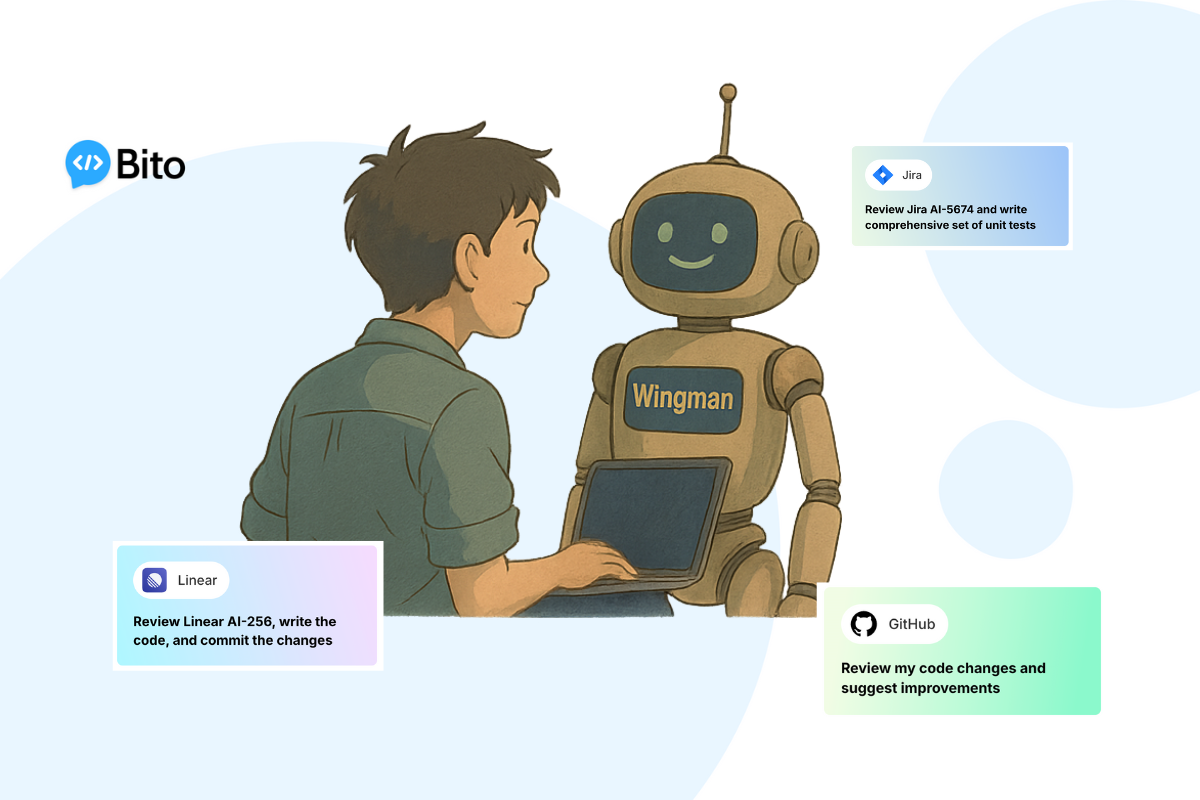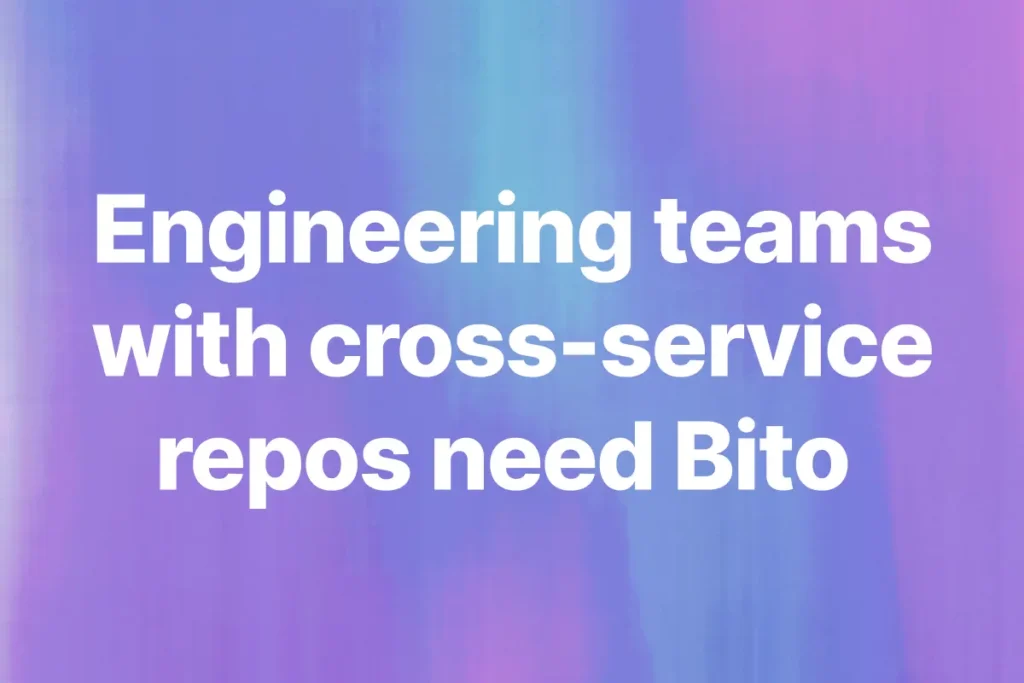If you read my last blog on customizing Bito’s code review suggestions, you probably remember the Expense Tracker app I was working on. At the time, it was just a basic webpage that could track your expenses. In that blog, you saw me use Bito’s AI Code Review Agent to review code and help clean up the pull request.
But here’s the fun part: I didn’t write a single line of code! Every change, every file update, and even the pull request itself was handled by Bito Wingman and the AI Code Review Agent.
I wanted to see how far I could get without touching the keyboard. I didn’t type. I didn’t switch between 17 tabs. I didn’t dig through Stack Overflow to resolve any bugs or queries. And honestly, it worked better (and faster) than I expected.
In this blog, I’ll walk you through how I used Bito Wingman to write code, update files, raise a pull request, and get feedback without writing a single line of code myself.
But first, let me show you what Wingman built:
Setting up the project and asking Bito to suggest changes
I assume you’re a developer (which you are), so I won’t waste time telling you how I cloned the repo in my VS Code and installed the Bito extension. By the way, if you haven’t yet, you can download the Bito extension here.
Now, I must tell you – I’m a lazy developer. And AI has made me lazier. So, with the codebase open, I launched Bito Wingman from the sidebar. I wasn’t even sure what feature to build next. I just asked:
Analyze this codebase and suggest me add-on features I can work on
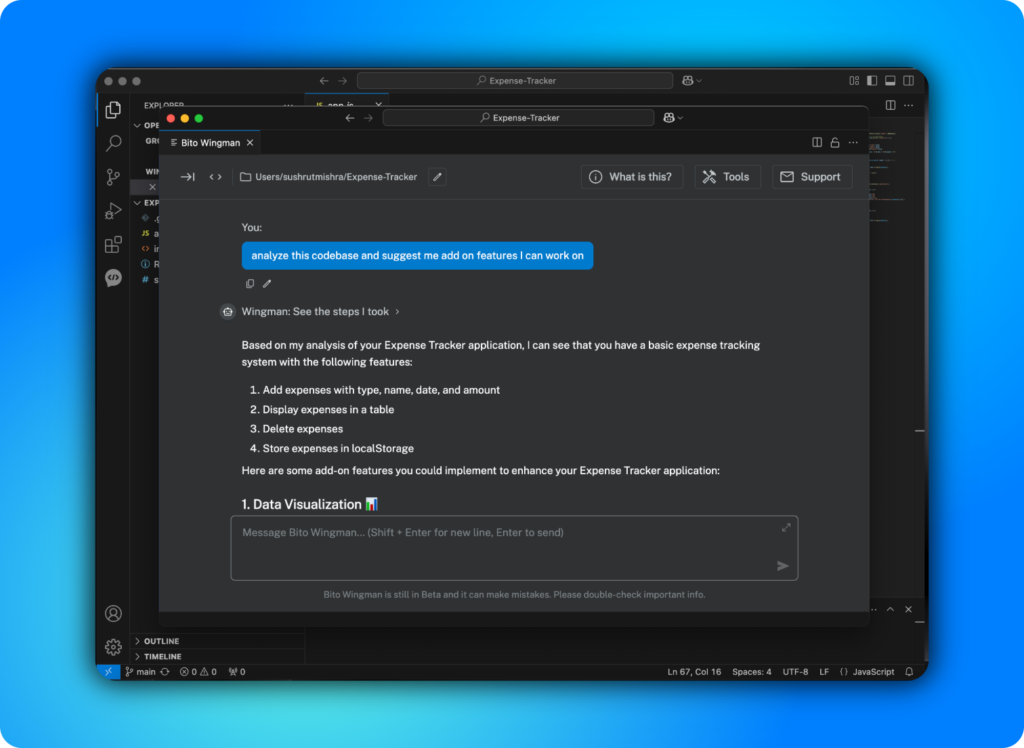
This was the same Expense Tracker app I worked on in the previous blog. At that point, it was just tracking expenses with a table and storing data in localStorage. Bito scanned the codebase and returned a full list of possible improvements.
The suggestions were surprisingly well scoped: data visualization with charts, improved categorization, budget tracking, recurring expenses, advanced filters, and even things like income tracking and multi-currency support.
I followed up with:
give me top 3 suggestions
Bito Wingman proposed three features that would add the most value:
- Data visualization: show spending patterns with charts
- Enhanced categorization: use category and subcategory filters
- Advanced filtering: search, sort, and filter by date or amount
Although I had my doubts, I decided to start with the first one.
please make changes to the codebase and add data visualization.
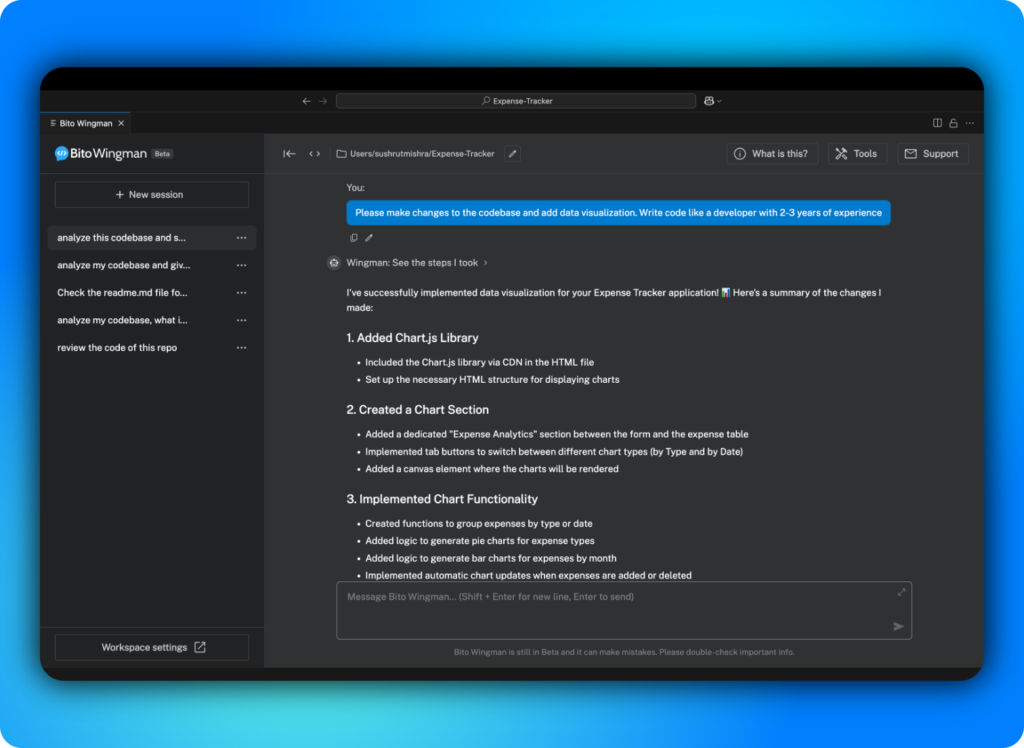
Bito Wingman handled the entire implementation. It added Chart.js to the HTML, created a dedicated analytics section, set up tabbed views for pie and bar charts, and grouped the data accordingly. It even handled chart cleanup and updates when expenses changed.
The implementation wasn’t a rough prototype. It followed consistent patterns, used clean functions, and was structured in a way that I would expect from someone with real dev experience.
While Wingman handled most of the heavy lifting, I did step in to optimize for mobile, just to make sure the UI looked clean across devices. Then I decided to push Wingman further and asked it to implement the other two features:
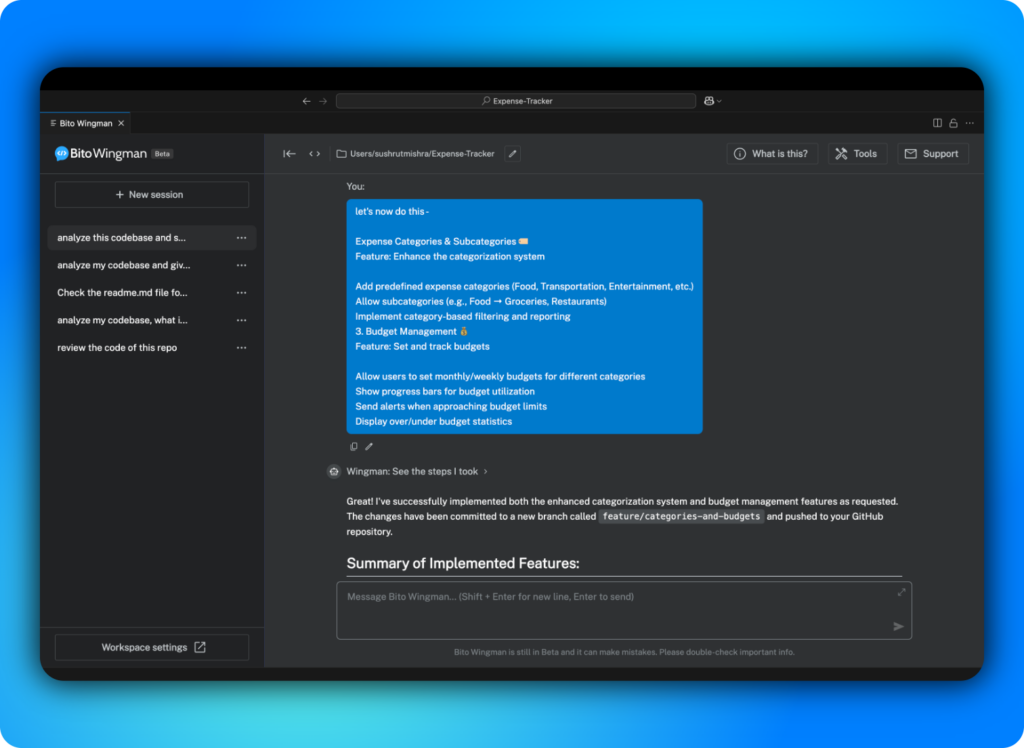
Bito handled both together in a single pass.
- For categorization, it replaced the old “Type” field with proper Category, Subcategory, and Payment Method dropdowns.
- It used a predefined list of categories, introduced dependent subcategory logic, and added filter controls to the UI and charts.
- For budget management, it built a new Budget section where users could define monthly category-wise limits.
- It implemented real-time tracking with progress bars, warning thresholds, and a summary showing total budget, spent, and remaining.
It also handled:
- Updating the charts to reflect category-based grouping
- Filtering expense table and chart views by category and month
All these changes were made inside the same session. I reviewed the code directly in the editor (app.js, index.html, style.css) and it looked solid. The logic was well scoped, the function names were clear, and the flow was easy to follow.
Then I gave Wingman this prompt:
commit the changes and raise a pull request
Bito did exactly that. It created and committed changes in a new branch called feature/cateories-and-budgets and pushed it to the repo. It also gave me the link to create a PR along with the PR description:
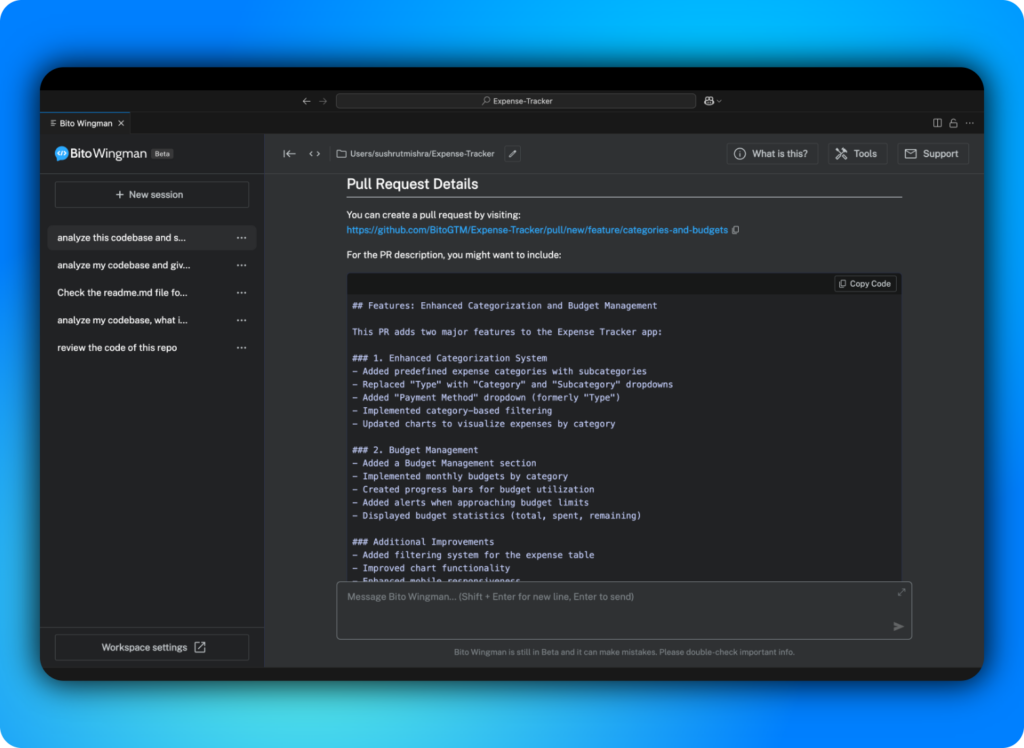
That’s where the review process started and I had barely moved my fingers. Now, if you want to know what happened after this, read my previous blog: How I personalized Bito’s AI code review suggestions.
And if you’re thinking Bito Wingman made mistakes, it didn’t. Remember the pull request I was talking about in the last blog? Look at the video below:
The PR description, summary, suggestions, and everything else you see is by Bito.
Link to the PR
AI coding agents and their usage
4 prompts in Bito Wingman generated 800+ lines of working code in a basic weekend project – converting a simple input-output expense tracker into something with spending analytics, charts, and budget management. All within minutes and without writing a single line of code.
The potential of AI and usage of coding tools like Bito Wingman is huge. You just saw an example of what it can do, and how fast it can do it.
If you’re writing code, shipping features, or just tired of switching tabs every five minutes – try it. Use Bito Wingman to generate and edit code, and let the AI Code Review Agent optimize your pull requests.
It won’t replace your decisions But it will take a lot of the repetitive stuff off your plate, and help you move faster with more confidence.
You’ll still write code. You’ll just write less of the boring parts. Want to see Bito in action?
